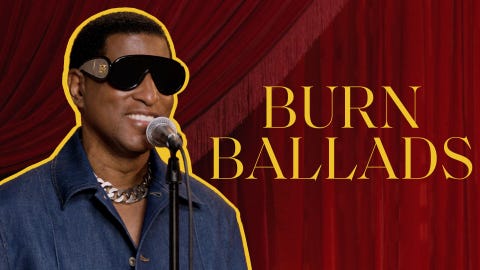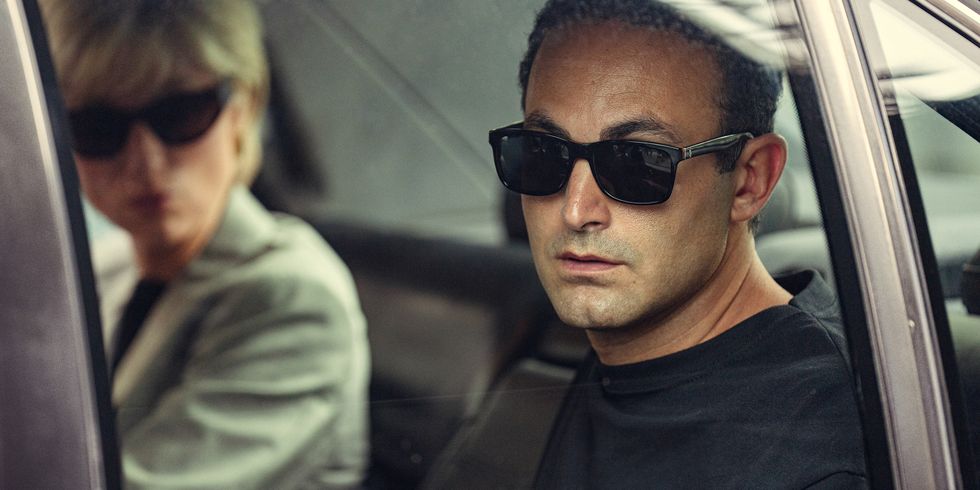The Crown’s Elizabeth Debicki on Portraying Princess Diana’s Final Days and Her Legacy of Love
The world knows how Princess Diana’s impromptu trip to Paris in 1997 ended. But while recreating it on The Crown, Elizabeth Debicki had to work against that knowledge while portraying the People’s Princess during her final days. “On the outside of the character, as just a person who is doing this job, going home, for instance, away from the set, I would feel very sad about the story we were telling. But while I was inside of it, I am just very present in the moment,” she tells ELLE.com.
It was a strange feeling, trying to avoid foreshadowing, the Emmy nominee says. But what she did make sure to emphasize are what people love most about Diana: “It was important to me that there were these moments of real warmth and kindness, and a real humanness to somebody who is enduring something that—the way Peter [Morgan, the creator] portrayed in the script—is just sort of an unbearable merry-go-round of choices that are being made for her, and that she really just wants to be able to do this simple yet almost completely out-of-reach thing, which is to call her kids, have an evening somewhere, and then leave. And because of what we know is a relatively accurate portrayal of that media frenzy, that whatever, however many hours it was, it just becomes impossible to do those things.”
In The Crown season 6, part 1, Debicki plays a “little more mature” Diana a year after her divorce from Prince Charles. “She’d been through some fires and she’d come out the other end of them, and there was a kind of confidence that was growing and maybe a different kind of sense of peace,” she says. After debuting as Diana last season, Debicki felt “much more confident” and trusted herself more this time around. She was able to play into different layers of the princess, including her role as a mom and her bonds with her sons, William and Harry. “And so I just thought, okay, here’s an opportunity to really focus on that relationship, which felt extremely important to me to put on screen as much as I could.”
More From ELLE

This season “is really just about Diana the mother, who wanted her kids to have a nice holiday,” Debicki says, hence the vacation with her kids and the Fayeds in July 1997. It was there that she really hit it off with Dodi Fayed, whom she reunited with a month later for another sun-kissed getaway. The two were spotted in St. Tropez, Monaco, and Sardinia—chased by cameras on land and sea—before making the infamous stop in Paris.
According to Tina Brown’s account in The Diana Chronicles, many of the details portrayed in The Crown’s sixth season are true: Dodi and Diana briefly swung my Villa Windsor, the former royal estate that Mohamed Al-Fayed renovated. Later, they ping-ponged from the Ritz, to Dodi’s apartment, to the restaurant Chez Benoit, then back to the Ritz for dinner with hardly any prior notice. They wedged through paparazzi in the very public entrance, settling first in the dining room, then, after awkward stares and tears shed by Diana, back up to the Imperial Suite. By then there were hoards of fans gathered with the photographers out front too. Diana and Dodi took the service entrance when they left the Ritz shortly after midnight.
Debicki has spoken about how “completely unbearable” it was filming scenes of Diana being swarmed by the press, with photographers crowding, snapping at her, and banging on the windows of her car. Recreating the scenes took a mental toll on the actress.
“It definitely spikes a lot of cortisol. It’s basically like doing a stunt, and your body gets very reactive,” she says. “There’s a lot of fight-or-flight that you are activating with your active brain….And so it was quite stressful. I would go home and feel quite…I don’t know, like wired, quite vigilant, it was difficult to relax.
“There were times where I thought, ‘Gee, I really need to work on how to de-role,’ which is a very excellent thing to learn to do. But then there were points where I just thought, ‘Well, I mean, I’m back on set in like six hours, so I’m just going to stay.’ The schedule was pretty intensive. We shot pretty sequentially, so I thought, ‘Well, it’s just my job for these few months to do this story, I guess, as honestly as I can.’”
The series also aims to give an honest portrayal, even without showing the tragic crash onscreen. We instead see the car, in pursuit by paparazzi, speed out of view into the Pont de l’Alma Tunnel, but hear the tires screeching and the collision off-screen. The last we see of Diana is a close-up of her hand, tightly grasping Dodi’s in the back seat. In reality, the Mercedes holding Diana, Dodi, driver Henri Paul, and bodyguard Trevor Rees-Jones, the only survivor of the crash, collided with a concrete pillar in the tunnel. It was going dangerously fast (some witnesses have estimated 90 to 120 miles per hour), with paparazzi aboard motorcycles on its tail. When the wreck was discovered by photographers—who else?—Diana was still alive, though in critical condition. Police and the fire and rescue team came to extricate the passengers from the vehicle. Sergeant Xavier Gourmelon, serving in the latter, told Tina Brown he heard Diana say, “My God, what’s happened?” Then doctors arrived and began treating her on the scene, which was already growing more hectic with photographers and onlookers, and the car horn still blaring. Diana was taken via ambulance to the Pitié-Salpêtrière hospital. There, she underwent an operation to tend to the internal bleeding in her chest, but the procedure couldn’t save her. She was pronounced dead at 4 A.M. on Aug. 31, 1997.
The Queen and Prince Charles were informed of the news at Balmoral in the middle of the night. That morning, Charles had the difficult task of breaking the news to his and Diana’s sons, William and Harry. Later that day, the Prince of Wales flew to Paris by himself to retrieve Diana’s body. Her funeral was held about a week later, on September 6 at Westminster Abbey, which the Queen allowed following mounting public pressure. (Her original stance was that the no-longer-royal ex-wife of her son didn’t need a royal burial. The public thought otherwise.) Diana was laid to rest at Althorp, her childhood home. People reports that 2,000 people gathered for the procession, and 2 billion watched the broadcast—it wasn’t just a nation, but a world in grief. More than 25 years later, those feelings remain.
And why shouldn’t they? A woman so beloved cannot be forgotten easily, if at all. It’s evident in the way we continue to romanticize her style and philanthropic work, revisit her life onscreen (including on The Crown), and draw comparisons to her daughters-in-law. “[She] had this sort of luminosity to her, and she made a lot of change in the world and she seemed to be able to do it by allowing herself to be very vulnerable with people, very open, give people a lot of love and attention,” Debicki says. “And at the same time, the world wondered, is she receiving the love she deserves?
“And from studying her life in the way that I have, I think that she put love at the center of her life in a very active way. She realized at that point, ‘This is what I can give people.’ It really is like a physical gift, and one that can change humanitarian campaigns, and build awareness. It really was just love, love, love. At the end of the day, I mean, what else could we hope to become as human beings than people who can lead with that and put it at the forefront?”
Erica Gonzales is the Senior Culture Editor at ELLE.com, where she oversees coverage on TV, movies, music, books, and more. She was previously an editor at HarpersBAZAAR.com. There is a 75 percent chance she’s listening to Lorde right now.


